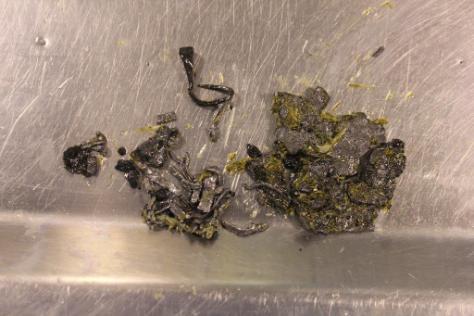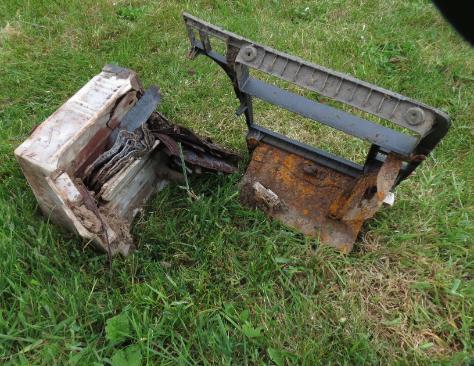PREVENTION OF LEAD POISONING IN YOUR STOCK IS THE BEST POLICY
Lead poisonings diagnosed by the Veterinary Laboratory Service of DAFM commonly peak in late Spring / early Summer when animals are turned out to pasture.
To reduce risk of lead poisoning, farmers are urged to carefully check their fields and hedgerows for sources of lead such as old car batteries before turning cattle out to pasture and before silage making. Hedgerows bounding public roads should be checked carefully for fly-tipping of risk materials. Where identified, sources of lead should be removed and disposed of safely.
Lead is highly toxic to animals, mainly affecting cattle and sheep, with calves being particularly at risk due to their increased susceptibility and curious nature.
Catastrophic losses have occurred on occasion, where discarded batteries have been accidentally incorporated into silage and this silage then fed to cattle.
From a public health perspective lead exposure in milking cattle or beef cattle being readied for slaughter has potential risks for the food chain. To protect the human food chain, cases of lead poisoning are investigated thoroughly, and certain restrictions may be applied.
Losses due to lead poisoning, not only of animals but also financially, can be substantial for the farmer.
COMMON SOURCES OF LEAD
- Lead batteries, including electric fencing batteries
- Discarded Lead flashing and lead piping
- Bonfire ash
- Old lead paint tins and flaking lead paint
CLINICAL SIGNS & DIAGNOSIS
Toxicity can occur within 24 hours of exposure and signs range from sudden death to blindness, ataxia, head pressing and convulsions.
Lead poisoning can often be diagnosed on clinical signs and finding a source of lead to which the animals had access. Measurement of lead concentrations in tissue or blood by your local DAFM Regional Veterinary Laboratory, on referral by your vet, will confirm the diagnosis.
KEY PREVENTION STEPS
Prevention is a matter of not allowing cattle access to sources of lead:
- Before cattle are turned out to grass in the spring and at regular intervals during the grazing season, search the fields for discarded batteries, lead shot, old painted items or other possible sources of lead. This is especially important in fields bounded by a public road where fly-tipped material may be a potential risk to grazing animals.
- Dispose of all lead batteries carefully according to Local Authority guidelines. Prior to disposal, ensure that batteries are kept where cattle cannot access them or where they or their leaked contents cannot end up in silage or in a diet feeder.
- Ensure cattle do not have access to old cars or tractors or leakage from their batteries or sump oil. Old car seat coverings (linoleum) often contain a lot of lead.
- Do not use timber painted with old toxic lead paints, like an old painted door to block a gap or doorway or leave them in areas that are accessible to cattle, especially calves, which have a tendency to lick such items.
- Do not use lead pipes for plumbing, or red lead paint for preserving metalwork or timber.
- Painted pallets may be a source of lead, especially if recycled as partitions.
- Old bonfire sites may contain a lot of lead in the ash residues.
If you suspect lead poisoning in an animal, contact your vet. They will be able to advise you regarding the diagnosis and can arrange to have clinical samples tested or a postmortem conducted on your animal at a DAFM veterinary laboratory to confirm the diagnosis.

Fragments of a battery found in the stomach of an animal that died from lead poisoning.

A damaged car or tractor battery is the most common source of lead in cases of lead poisoning in cattle.






